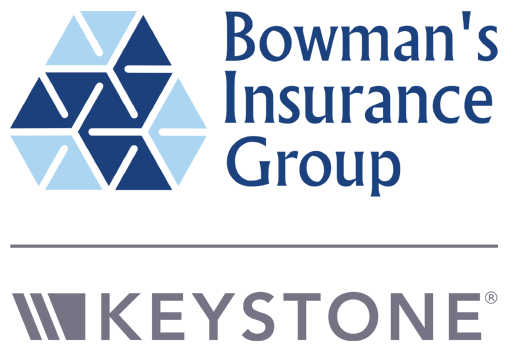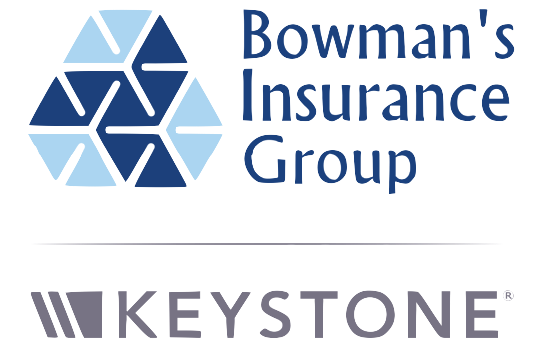Pennsylvania Property Manager & Real Estate Investor Insurance

See How We're Different:
Call Us: 717-838-5464
Top 3 Recommended Policies
Index
Understanding the Rising Insurance Costs in Pennsylvania
Insurance Challenges and Market Dynamics for Property Managers
The Consequences of Insurance Gaps and Uninsured Properties
Regulatory Environment and Taxation Affecting Pennsylvania’s Insurance Industry
Preparing for the Future: What Property Managers and Investors Should Do Now
Contact Us
For property managers and real estate investors in Pennsylvania, navigating the insurance landscape has become increasingly complex. Rising premiums, coverage challenges, and regulatory nuances are shaping how stakeholders protect their investments and manage risk. Understanding the current trends and forecasts is essential to making informed decisions that safeguard assets and ensure business continuity.
This comprehensive guide explores the state of property insurance in Pennsylvania, the impact of rising costs on investment decisions, and what property managers and investors need to know to stay ahead in 2024 and beyond. Insights from industry experts, current statistics, and market forecasts will provide a clear picture of the challenges and opportunities in this evolving environment. For more detailed analysis on insurance cost trends affecting real estate investors, see the MPA Magazine report on rising insurance costs.
Understanding the Rising Insurance Costs in Pennsylvania
One of the most pressing issues facing property managers and real estate investors in Pennsylvania is the sharp increase in insurance premiums. In 2023 alone, homeowners in Pennsylvania experienced a 7% rise in property insurance premiums. This increase is part of a broader national trend, with rates climbing 11.3% across the United States through the end of last year.
Such increases have a direct impact on the profitability and feasibility of real estate investments. Higher insurance costs translate to increased operating expenses, which can reduce cash flow and affect the overall return on investment. This is particularly challenging for investors managing multiple properties or those operating on thin margins.
Moreover, the rising costs are not just a matter of premiums. Some investors face the more daunting problem of insurance unavailability, where hazard insurance policies are either extremely difficult to obtain or priced prohibitively high. Jeffrey Tesch, CEO of RCN Capital, highlights this challenge: "Soaring insurance costs, and instances where hazard insurance is simply not available is another significant hurdle for these investors to overcome." This situation forces many to reconsider their investment strategies or avoid certain markets altogether.
Impact on Real Estate Investment Decisions
According to recent research, over two-thirds (68%) of real estate investors reported that rising insurance costs or lack of coverage availability influenced their buying and selling decisions. This statistic underscores how insurance concerns are no longer peripheral but central to investment planning.
For property managers, this means that securing adequate insurance coverage is becoming a strategic priority. It also necessitates a more proactive approach to risk management, including evaluating property vulnerabilities, investing in mitigation measures, and working closely with insurance providers to find tailored solutions.
In addition to these strategies, many investors are exploring alternative insurance models, such as self-insurance or pooling resources with other property owners to negotiate better terms. This collaborative approach can help mitigate some of the financial burdens associated with rising premiums. Furthermore, the growing trend of technology-driven insurance solutions, such as insurtech platforms, is providing new avenues for property managers to streamline their insurance processes and potentially lower costs through data-driven insights and analytics.
As the landscape of insurance continues to evolve, staying informed about legislative changes and market trends is crucial for investors. For instance, recent discussions around regulatory reforms aimed at increasing competition in the insurance market could lead to more favorable conditions for property owners in the near future. Engaging with local real estate associations and attending industry conferences can also provide valuable networking opportunities and insights into best practices for navigating these turbulent waters.

Insurance Challenges and Market Dynamics for Property Managers
Property managers in Pennsylvania operate within a rapidly growing industry, expected to reach $3.2 billion by 2025. This growth is accompanied by increasing complexity in managing insurance requirements across diverse property portfolios.
One of the challenges is balancing cost control with comprehensive coverage. Property managers must ensure that properties are protected against a range of risks—from natural disasters to liability claims—while keeping premiums sustainable for property owners and investors. The need for thorough risk assessment has never been more critical, as the variety of properties under management can lead to unique insurance needs. For instance, a residential apartment complex may face different risks compared to a commercial retail space, necessitating tailored insurance solutions that can be both comprehensive and cost-effective.
Kevin McPoyle, an industry expert, has noted that while some reports about property insurance rates being "incredibly challenging" may be overstated, forecasts still indicate sharply higher rates for business owners in 2023. This suggests that property managers should anticipate ongoing upward pressure on insurance costs and plan accordingly. The volatility in the insurance market is often influenced by broader economic factors, including inflation and changes in regulatory environments. As such, property managers must stay informed about these trends to make proactive adjustments to their insurance strategies.
Strategies for Managing Insurance Costs
Effective risk management is key to controlling insurance expenses. Property managers can implement several strategies, such as:
- Conducting regular property inspections to identify and address potential hazards early.
- Investing in security systems, fire prevention, and disaster mitigation technologies.
- Working closely with insurance brokers to explore competitive policies and negotiate terms.
- Educating property owners about the importance of adequate coverage to avoid gaps in protection.
By adopting these measures, property managers can help mitigate the impact of rising insurance premiums and maintain the attractiveness of their properties to investors and tenants alike. Additionally, fostering a culture of safety and awareness among tenants can lead to reduced claims and, consequently, lower insurance costs. For example, hosting workshops on emergency preparedness or providing resources on maintaining property safety can empower tenants and create a more secure living environment.
Moreover, leveraging technology can enhance the efficiency of risk management practices. Property management software can streamline the tracking of inspections, maintenance requests, and compliance with safety regulations, ensuring that property managers remain proactive rather than reactive. By integrating these technological solutions, property managers can not only safeguard their properties but also demonstrate to insurance providers their commitment to risk reduction, which may lead to more favorable insurance terms.
For a detailed overview of the property management market in Pennsylvania, including industry size and employment figures, visit the
IBISWorld report on Pennsylvania’s property management industry.
The Consequences of Insurance Gaps and Uninsured Properties
Despite the importance of property insurance, a significant portion of homeowners in Pennsylvania remain uninsured. Approximately 6.6% of homeowners—roughly 348,965 individuals—do not carry property insurance. This exposes them to substantial financial risk in the event of damage or loss. Without insurance, homeowners may find themselves facing overwhelming repair costs after natural disasters, theft, or other unforeseen events, which can lead to long-term financial hardship. The lack of coverage not only jeopardizes individual homeowners but also has broader implications for community resilience and recovery efforts following catastrophic events.
For real estate investors and property managers, uninsured properties can complicate portfolio risk profiles and increase exposure to unforeseen liabilities. This situation also underscores the broader challenges within the insurance market, where affordability and accessibility remain barriers for many. The absence of insurance can lead to a ripple effect, influencing investor confidence and potentially deterring new investments in areas with high rates of uninsured properties. Furthermore, properties without insurance may fall into disrepair, negatively impacting neighborhood aesthetics and property values, thereby affecting the entire community's economic stability.
Foreclosure Rates and Insurance Implications
Interestingly, Pennsylvania’s foreclosure rate stands at 0.7%, slightly better than the national average of 0.8%. While this suggests relative market stability, the rising insurance costs and uninsured homeowner rates could potentially influence future foreclosure trends if property owners face financial strain from damage claims or uninsured losses. As homeowners struggle to cover unexpected expenses without the safety net of insurance, they may find themselves unable to meet mortgage obligations, leading to increased foreclosure rates. This scenario could create a vicious cycle, where foreclosures further depress local property values, making it even harder for remaining homeowners to maintain their financial commitments.
Property managers and investors should monitor these dynamics closely, as insurance issues can indirectly affect property values, tenant stability, and overall market health. The interconnectedness of insurance coverage and property management means that a lack of insurance can lead to increased vacancy rates and tenant turnover, as renters seek more secure living situations. Additionally, properties that are frequently changing hands due to financial distress may attract less desirable tenants, further exacerbating the challenges faced by property managers. As the landscape of property ownership evolves, understanding the implications of insurance gaps will be essential for maintaining a robust and resilient real estate market in Pennsylvania.
Regulatory Environment and Taxation Affecting Pennsylvania’s Insurance Industry
The Pennsylvania insurance industry operates under strict regulation by the Pennsylvania Insurance Department. This regulatory framework ensures consumer protection but also influences the cost structures for insurance providers. The department oversees the licensing of insurance companies, monitors their financial health, and enforces compliance with state laws, which can be particularly complex given the diverse range of insurance products available, from health and auto to property and casualty insurance.
Insurance companies in Pennsylvania are subject to various taxes, including insurance premiums tax, corporate income tax, corporate capital gains tax, and value-added tax. These taxes can impact the pricing models insurers use, which in turn affects premiums paid by property owners and investors. Additionally, the state imposes specific fees for certain types of insurance, such as workers' compensation, which can further complicate the financial landscape for insurers operating in Pennsylvania. The cumulative effect of these taxes and fees can lead to higher premiums, making it crucial for consumers to stay informed about the evolving tax landscape.
Understanding these regulatory and fiscal factors is important for property managers and investors as they navigate insurance options and negotiate coverage terms. A thorough grasp of the regulatory environment can empower stakeholders to make informed decisions, potentially leading to cost savings and better coverage. Furthermore, staying abreast of legislative changes can provide insights into future trends in insurance pricing and availability, allowing property managers to adapt their strategies accordingly.
For a comprehensive analysis of Pennsylvania’s insurance industry regulations and taxation, see the GlobalData report on Pennsylvania’s insurance industry. This report delves into the nuances of state regulations, offering valuable insights into how these rules shape the competitive landscape and influence market dynamics.
Moreover, the Pennsylvania insurance market is also affected by broader economic conditions, such as interest rates and employment levels, which can influence the demand for various types of insurance. For instance, a booming real estate market may lead to increased demand for property insurance, while economic downturns can result in higher claims and lower premiums. Understanding these interconnections is vital for stakeholders looking to optimize their insurance strategies and ensure they are adequately covered against potential risks.

Preparing for the Future: What Property Managers and Investors Should Do Now
Given the current trends and forecasts, property managers and real estate investors in Pennsylvania should adopt a forward-looking approach to insurance. This includes:
- Reviewing and updating insurance policies regularly: Ensure coverage aligns with current risks and market conditions.
- Building strong relationships with insurance providers: Collaborate to find innovative solutions and negotiate favorable terms.
- Investing in risk mitigation: Proactively reduce exposure to hazards through property improvements and safety measures.
- Staying informed about regulatory changes: Monitor legislation and tax policies that could impact insurance costs or availability.
By taking these steps, stakeholders can better manage the challenges posed by rising insurance costs and coverage complexities, positioning themselves for sustainable success in Pennsylvania’s dynamic real estate market. Additionally, it is crucial for property managers and investors to consider the implications of climate change on their properties. With increasing occurrences of extreme weather events, such as floods and hurricanes, understanding how these factors can affect insurance premiums and coverage options is essential. Investing in sustainable building practices and resilient infrastructure not only helps mitigate risks but can also enhance property value and appeal to environmentally conscious tenants.
Furthermore, technology plays a significant role in modern property management and insurance strategies. Utilizing data analytics can help identify potential risks and trends, allowing for more informed decision-making. Property managers can leverage software solutions that provide insights into market conditions, tenant behaviors, and maintenance needs, ultimately leading to improved operational efficiency and reduced costs. Embracing these technological advancements will not only streamline processes but also position property managers and investors as forward-thinking leaders in a competitive landscape.
For further insights on the forecasted property insurance rates and their impact on business owners, refer to the
Central Penn Business Journal’s analysis.



